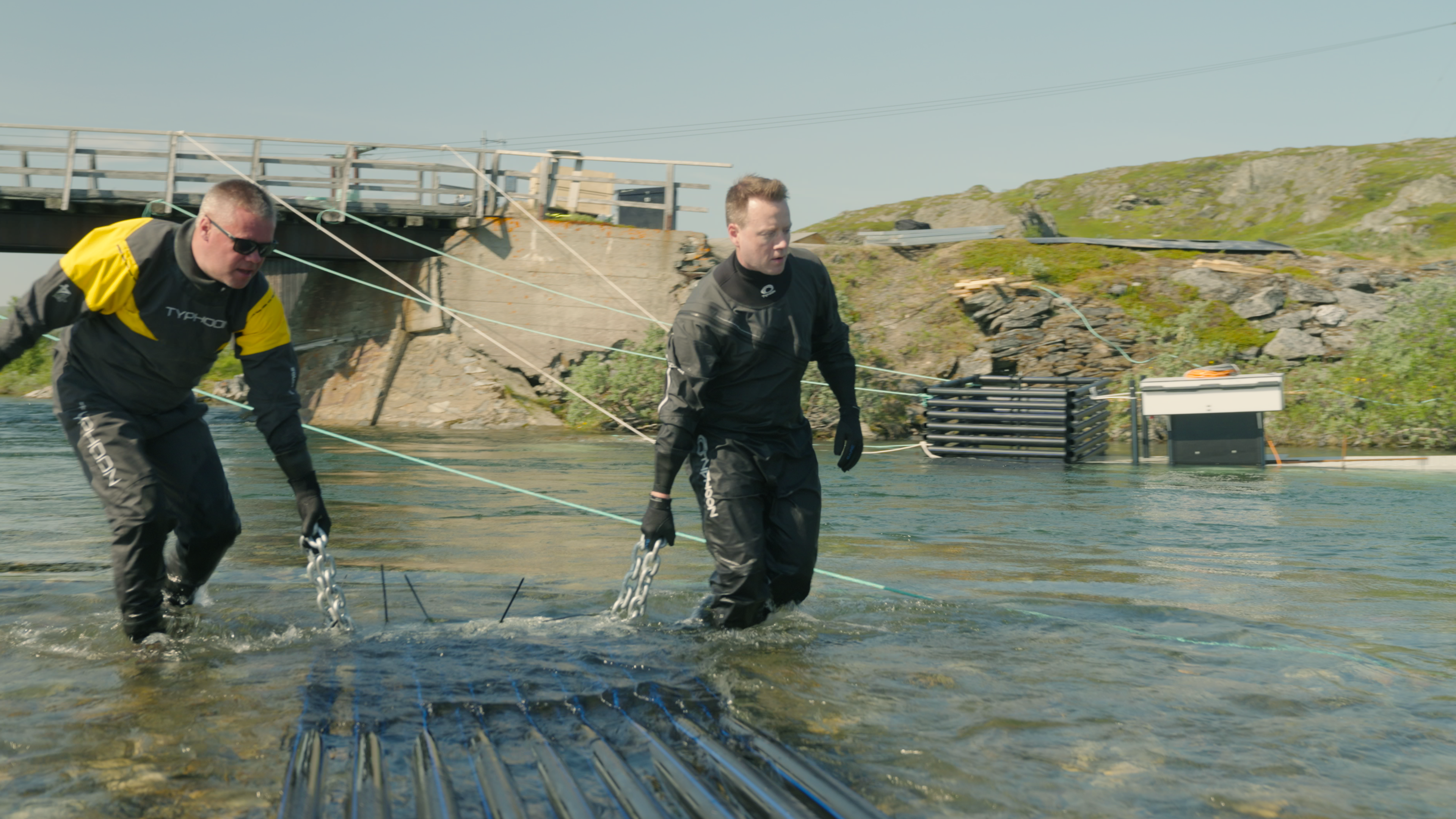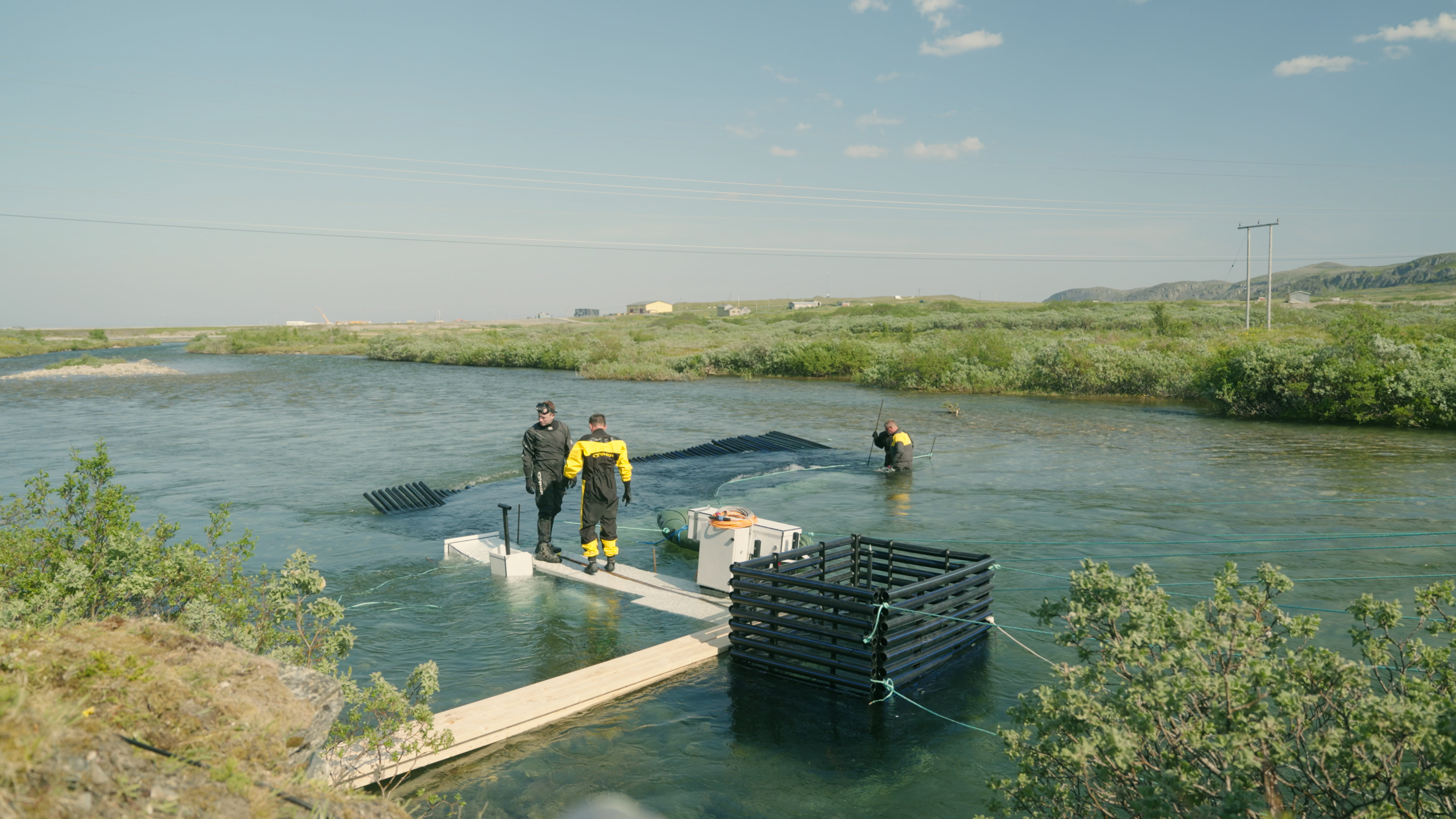In Troubled Waters: Saving Norway's Wild Salmon
This story began in the 1960s in Norway’s far north, where the nation’s coastline gives way to the frigid waters of the Arctic Ocean. More than 60 years ago, an invasive species of fish was artificially introduced into rivers bordering Norway from the east side of the Pacific Ocean.
The aim was to boost food resources for local people. But the result was quite different: As the humpback salmon made its way through Norway’s river system over the decades, the new invasive species soon exploded in numbers and began outcompeting local wild Atlantic salmon for spawning grounds and nutrients during its biennial (24-month) spawning cycle. It also created - and continues to create - a whole range of other negative outcomes. These include introducing and spreading new diseases to other marine life and, when the invasive salmon die, increasing the nitrogen content of rivers while reducing the oxygen content, which in turn causes other fish to die.
As is often the case when humans tamper with nature, disaster follows. Today, with the population numbers of Norway’s wild Atlantic salmon having halved since the 1980s, the native species faces the very real prospect of extinction if the invasive species, which does not occur naturally in Norway’s waters, is allowed to flourish unchecked.
Beyond business
But sometimes we come across possibilities that stretch beyond a business focus to achieve a different type of good. And fortunately, Huawei has a program in place to deploy resources and technological know-how to achieve positive outcomes for society.
Launched in 2019, our long-term digital inclusion and sustainability initiative TECH4ALL has shown that technology can help address many of the global challenges we face today, including biodiversity loss. TECH4ALL focuses on working with global and local partners to develop technology solutions that have a maximally beneficial impact for society in four key domains: environment, education, health, and development.
In Norway’s case, the focus was on the environment.
Aware of the problem caused by the invasive humpback salmon in Norway given that it is a well-reported and growing national concern, BJFF, a local hunting and fishing organization based in the northern fishing village of Berlevag, and Huawei began working on developing a tech-driven approach to solving the problem. Supported by the TECH4ALL team in Huawei’s Shenzhen HQ, the partners aimed to develop a fully automated sorting mechanism to filter out the invasive species. The solution would force fish to swim through a tunnel system installed across the river. An automated gate would then prevent humpback salmon from proceeding upriver by remaining closed, giving the fish no option but to swim into a holding tank for removal. For native Atlantic salmon and other fish, the gate would open so they could proceed upstream as normal.
BJFF possessed the required river management expertise and local knowledge. Combined with Huawei’s expertise in technical architecture and cloud computing, the idea was taking shape. But additional local partners were required to fill in the gaps required for a workable solution. TECH4ALL partner Troll Systems has extensive experience constructing installations for Norway’s expansive fish farming industry. And based in Oslo, Simula Consulting are leading consultants in the field of machine learning.
Gradually, over nearly two years, the pieces were falling into place and pilot projects were scheduled two of Norway’s rivers - Kongsfjord and Storelva - ready for the start of the salmon breeding cycle in June 2023.
Community comes first
Being a passionate sport fisherman myself, it was an exciting task to see if we could use technology to solve this issue. As the world’s first project of its type, we had no previous reference to start with and began not knowing whether it was possible.
I visited Berlevåg several times during project implementation, and saw first-hand how important the salmon rivers and this project are for the local community - salmon and the related industries are cornerstones of local livelihoods and culture. That also meant that day to day activities, like going to the supermarket or hiring a car, always took longer than normal when people knew I was from Huawei. Everyone would stop what they were doing and ask for project updates, which I was more than happy to provide!
I also did not expect to spend several days actually working in the river, up to my neck in near-freezing water side-by-side with local volunteers. But, as is the case in Norway, when something needs to get done, everyone pitches in.
For example, when installing the fish trap in the first river, we realized we needed to build a bridge from the riverbed out to the sorting mechanism - a task that initially seemed to present a time-consuming roadblock. Fortunately, several local people were watching and overheard that we were facing this challenge. One of them told us that he could build a bridge. So, he went off in his car and returned 30 minutes later with a truck full of materials. Two hours later, he had built the bridge.
-

installing 1 Image credit: Bendik Skogli / Vegard on the left installing the filter with a local volunteer -

Image credit: Yi Cheng / Vegard in the river with volunteers on the bridge built on the fly by a by a local man
Adapting and adjusting to nature
The project was complex and continual adjustments had to be made. You can make educated assumptions in advance, but you can only see the result in the actual environment. After deployment, we have conducted constant monitoring, examining how the fish behave in the trap and discussing how we can optimize the solution. As we are working with living species, you have to account for their normal behaviors rather than trying to force them to do something that does not come naturally. For example, water flow needs to be sufficient to allow the Atlantic salmon and other fish to swim upstream normally, and the gate needs to be open long enough for the them to swim through, but not so long that the humpback salmon also have time to swim through.
Vegard talks to Lucy Houliston, Zoologist and Conservationist, National Geographic Young Explorer
The filtering system in action
And one party alone cannot identify all the optimizations. Technical experts, construction engineers, and river management experts came together to analyze what was happening, discuss possible solutions, and make the necessary adjustments. Collaboration: that is how you succeed.
After great efforts from all partners, the solution exceeded our expectations. With the pilot projects up and running, the system filtered out 5,604 humpback salmon in Kongsfjord and more than 550 in Storelva, with an identification accuracy of 99.998%! At the same time, thousands of Atlantic salmon and Arctic char were allowed to proceed upstream untouched.
The next chapter
Beginning in 2023, the Norwegian government started financing initiatives to fight the humpback salmon but they have all been for manual solutions. After visiting our project multiple times, officials now realize that automated solutions are the only way forward based on our experience and achievements so far.
There is also one other species that is a threat to Atlantic salmon: escaped farmed salmon. When these two species interbreed, it weakens the gene pool of wild Atlantic salmon. This has been a problem for decades, with no good way of solving it.
Our solution has been designed to also identify and remove escaped farmed salmon, and after seeing our great results this year, the industry is now very interested in investing in the next step.
The fish farming industry is also a particular interesting industry for Huawei to engage with, as they are constantly in need of new and better solutions for connectivity, storage, energy, and automation. It will be very interesting to see where this can lead us and I am positive about the future. To quote BJFF Head, Geir Kristiansen, “When Huawei decide on something, they fix it. No matter what it takes!”
Disclaimer: Any views and/or opinions expressed in this post by individual authors or contributors are their personal views and/or opinions and do not necessarily reflect the views and/or opinions of Huawei Technologies.


Leave a Comment